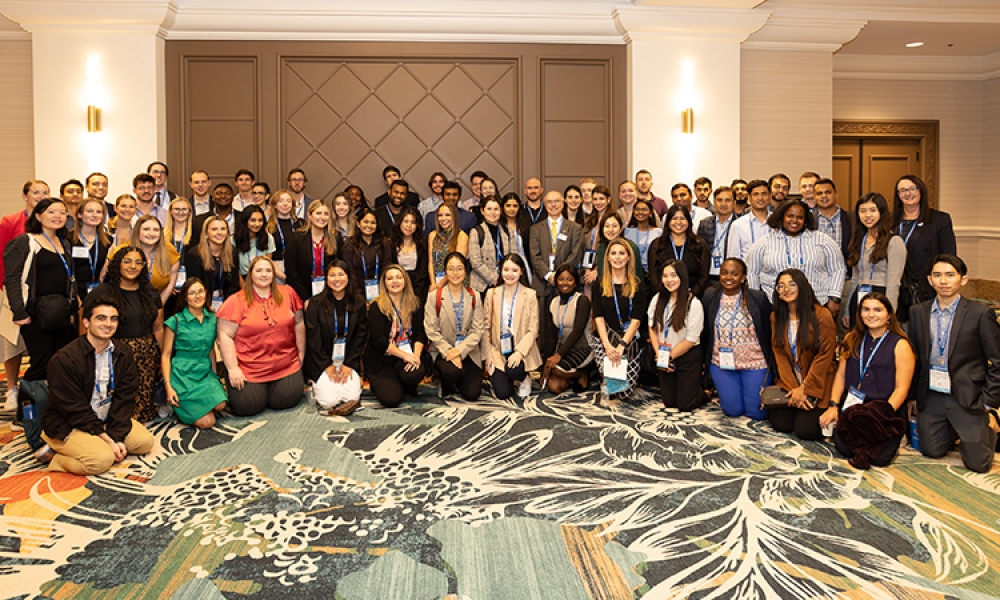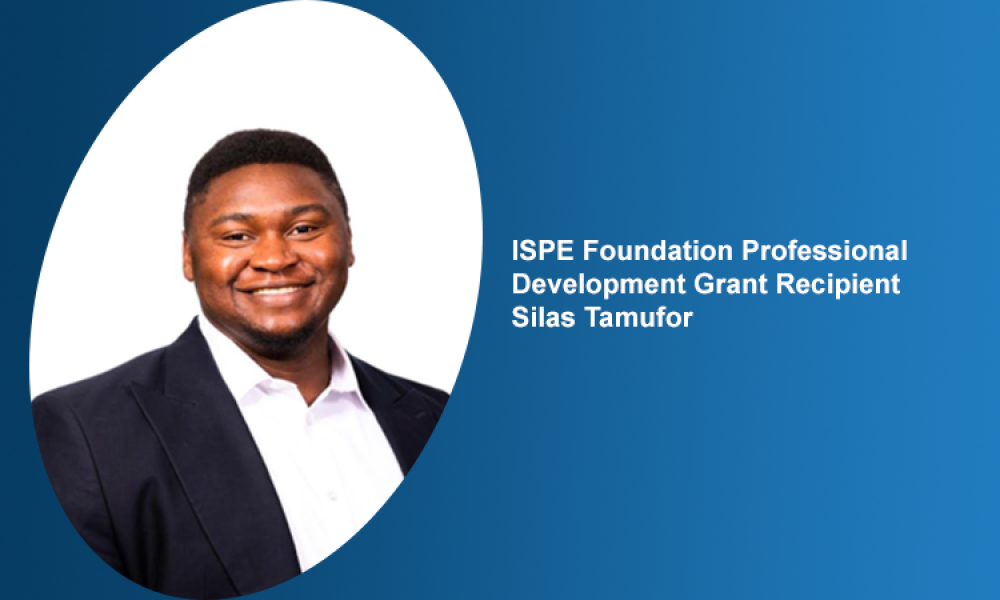The Future of Aseptic Manufacturing: Digitalization and Advanced Technologies

The 2024 ISPE Aseptic Conference will offer a glimpse into the best discussions on the future of aseptic manufacturing. Attendees will learn how optimization is evolving both in the form of digitalization and in novel process methods, as well as how highly potent products are becoming more and more common in the sterile products space.
Evolution of Aseptic Products – A Matrix of Change
The trends that continue to develop in the aseptic products market tend to emerge from three ideologies: ease of clinic/patient use, improved product quality, and reduction of cost of goods. The industry is undergoing a dynamic change within these categories.
Evaluating the type of facility, machine, and delivery device needed to meet technology demands will ensure the optimal quality and cost of a product, and ultimately provides clinics and patients with an easy-to-use product. Each ideology will encourage changes in containers, closures, machines, facilities, regulatory thought, and everyday operations.
Within the aseptic and sterile products world, there are many products ranging from standard intravenous solutions to highly complex aseptic medical device combination products. Even in the simplest form of a container, a vial, there are many new technologies that have emerged in the past five years that protect the product and the patient in new and changing ways. These technological changes impact the fill line, the inspection methodologies, and the operations within the logistics and supply chain.
Many recent project conversations about new fill lines or evaluating legacy equipment have been about the changes needed to support the technology shift at the container level. To support multiple new vial types – some with different dimensions, and some with different operability – new recipes are required, new change parts are required, and sometimes new machines or facilities are required to be able to shift to meet the demand for the new products.
The 2024 ISPE Aseptic Conference will help professionals understand how risk assessments and regulatory responses are important to adapt to ambiguity when dealing with innovation. For example, James L. Drinkwater, PE, Head of Compliance, F. Ziel GmbH, Chair, Annex 1 Focus Group, PHSS, will present on ICHQ9(R1) Compliant Risk Assessment for CCS. Additionally, the Regulatory Panel – Annex 1 – Inspections Learnings, will feature representatives from various health authorities, including the World Health Organization, the United States Food and Drug Administration (US FDA), and more.
New and Emerging Aseptic and Sterile Products
In the section below, Richard Denk, Senior Consultant of Aseptic Processing and Containment, SKAN AG, will reference many of the new types of products that the industry is supporting with these novel technologies. Antibody drug conjugates (ADCs), radionucleotides, highly active compounds, cell and gene therapy products, and injectable medical device combination products are pushing the manufacturing of aseptic and sterile products to new technologies at the container and closure level. Most fill lines and fill line facilities in the world do not support only one vial type/size. Therefore, the machines have grown more complex and take more time for engineering and testing to supply a robust solution.
The aseptic and sterile products world is about more than the vials-as-a-container type. There has also been a growth in many non-vial containers. The bag container is a preferred container in much of the gene therapy world, the pre-filled syringe is the preferred container in the vaccines industry, and we are seeing a surge of cartridge filling for autoinjector devices to support the growth of the GLP-1 market and similar agonist treatments. Add to that new research in the use of microneedles, intranasal drug delivery approaches, and the growth of microdosing ocular products for an aging population, and it is easy to see why this industry is a dynamic environment in which containers, equipment, facility design, and regulatory thought continually must shift to support the safe production of products.
Many aspects must be balanced when taking on this level of complexity and looking at the matrix needed to make the decisions in terms of assessing the optimal capital expenditures for developing and scaling multiple products. For example, the industry is assessing ideal filling line recommendations for higher quality, performance, and efficacy.
Navigating Complexity: Optimization, Aseptic Transfer, and Digitalization in Manufacturing
Matthew Gorton, Director of Business Development at GBA Life Sciences, has addressed some of the gnawing questions regarding optimization and the use of data to functionally react to day-to-day operations issues. Optimization is often a discussion that boils down to the question, “How can we achieve a better tomorrow?” Many are focused on increased product and patient safety, others are on OEE for corporate health, and the best consider both. In our space, two main topics come to the forefront, “how do we offer better aseptic transfer,” and “where will we see the greatest process improvements in the next few years.”
Transferring components into an aseptic isolator continues to be one of the most discussed topics, with more attention given to this topic as Annex 1 becomes part of the norm. The industry is navigating new terms like “open and closed isolators,” and vendors are innovating new technology to help ensure sterile product manufacturers have systems in place to transfer components from their cleanrooms into their isolators.
One such innovation will be presented at the 2024 ISPE Aseptic Conference, in which Giacomo Guidi, R&D Isolation Technologies with IMA, will present a session titled, “High Concentrated VPHP for Continuous Decontamination.” As part of this presentation, Guidi will share data he and his team uncovered that highlights some of the advantages. He will share how they have used highly concentrated vapor phase hydrogen peroxide (HC-VPHP) with a continuous tunnel for component infeed. He will also demonstrate how the management of several pressure chambers allows H2O2 to be kept confined, while still achieving microbiologic abatement and residual H202 levels that are within spec to enter a barrier.
When discussing process improvements, the topic of digital twins is getting lots of attention. In “Data-driven Process Optimization Using Digital Twins,” Robert Tod Urquhart, Executive Industry Adviser, CIM A/S, and Roger De Reus, Senior Assembly Engineer, Novo Nordisk A/S, will share how they have implemented digital twin technology to solve a common problem: “What do you do when you have data originating from critical systems that affect multiple disciplines, and there is not a single stakeholder responsible for analyzing and implementing change as it effects the broader organization?” Attendees will hear how new software is being leveraged that can interface with existing machine devices and other software to track events, parameters, and users. This, in turn, allows users to deliver detailed insights into the production process without affecting the existing validation of their combination product (insulin pen) manufacturing line. Hear how this technology and real time monitoring is benefiting the manufacturing process as well as the interactions with health authorities and regulatory agencies.
Meeting the Challenges of Highly Potent Products: Strategies for Employee Safety and Contamination Control
The number of highly active (potent) sterile products is increasing. The reasons for this are specifically developed therapies to treat cancer, new therapies that are also classified as highly active, such as radiopharmaceuticals, as well as cell and gene therapies. All these therapies require special consideration during production, especially in multi-purpose facilities or for the active protection of employees in production. When manufacturing in multi-purpose facilities, Annex 1 is driving a deeper focus on reducing contamination risks with contamination control strategies and cross-contamination avoidance tactics.
Functional primary containment is an important factor, which includes isolators to prevent the spread of the substances that will be produced as well as suitable cleaning procedures to clean the process system to the required limit. The better the primary containment works, the lower the spread to surrounding areas.
Primary containment also plays an important role in protecting employees in production. Employees can come into contact with highly active substances in different ways. First, they can come in contact through the release of aerosols and their deposited residues. This can occur during the filling process of the pharmaceutical product in vials, syringes, etc., or through possible contact with contaminated primary packaging such as vials, syringes, etc.
Released aerosols should be contained by the ventilation technology within an isolator system. For example, they should be fed to the filter system via the shortest paths. Ideally, these filters are in front of the air return ducts to avoid spreading into adjacent areas. The filters should have a save-change function so that they do not pose a risk to employees when changing the filter.
The safety of employees in production, as previously mentioned, is a critically important factor. Training employees properly is essential. It is also important to ensure substances that leave their primary containers, such as isolators, are free of any contamination. Before opening an isolator system, all surfaces should be cleaned in accordance with standard requirements.
More Reasons to Join the 2024 ISPE Aseptic Conference
In addition to the sessions noted above, the 2024 ISPE Aseptic Conference will host an Aseptic 101 session on Monday, 11 March, presented by Christa Myers, Senior Fellow for Aseptic and Sterile Products, Vertical Market Leader, CRB, and Jörg Zimmerman, Vice President, Vetter Development Service External Affairs, Vetter Pharma Fertigung GmbH & Co. KG. This session is set up to answer many of the level 1 vocabulary questions that will enable you to be more attentive during sessions and regulatory panel discussions.
The regulatory panel event is the highlight of the conference. Oftentimes the questions posed are difficult to answer, and the panel works to explain why specific sections of documents are written the way that they are. Many topics are addressed at this conference: sustainability, lyophilization, robotics, gloveless isolators, and complex regulatory topics. Lastly, this is the conference enables attendees to expand their networks with like-minded engineering, manufacturing, and quality professionals.
This year, ISPE is also offering a plant tour of Takeda Wien on Thursday, 14 March. Come along and see a state-of-the-art facility and ask questions regarding design and operation topics. This event will sell out fast, so it is best to secure passes today.
.jpg)





